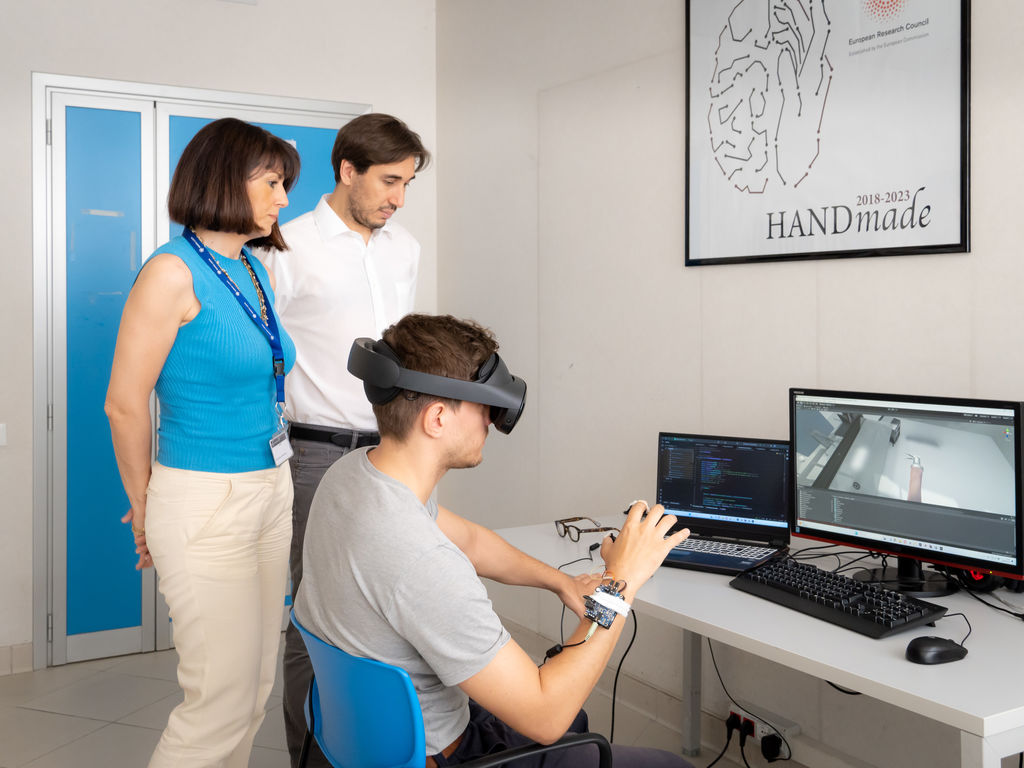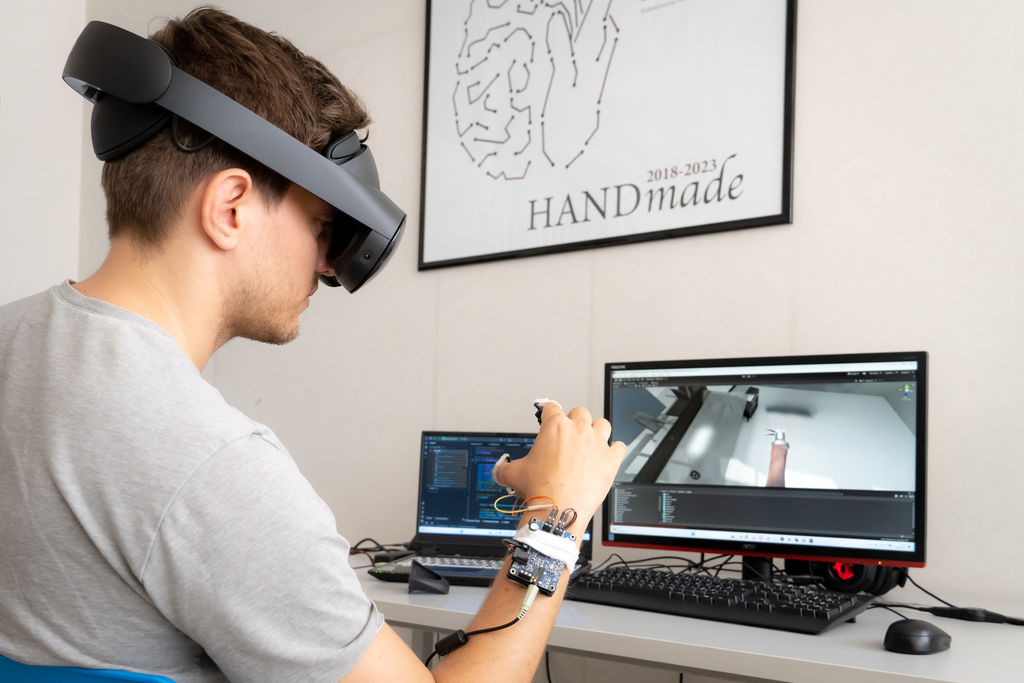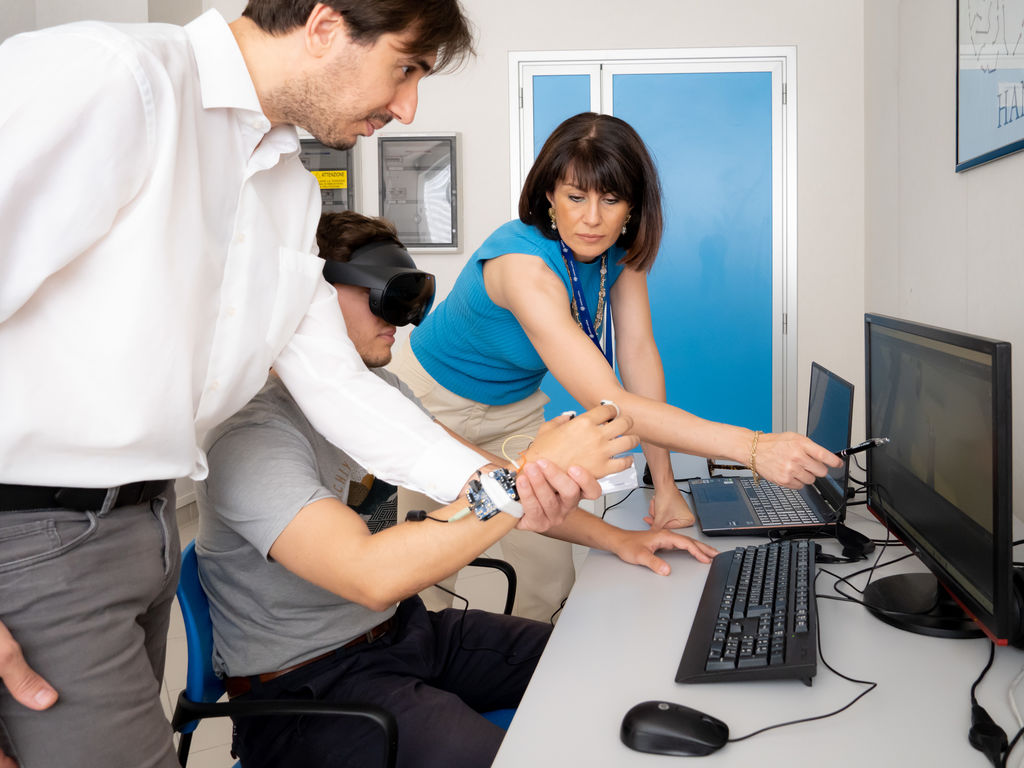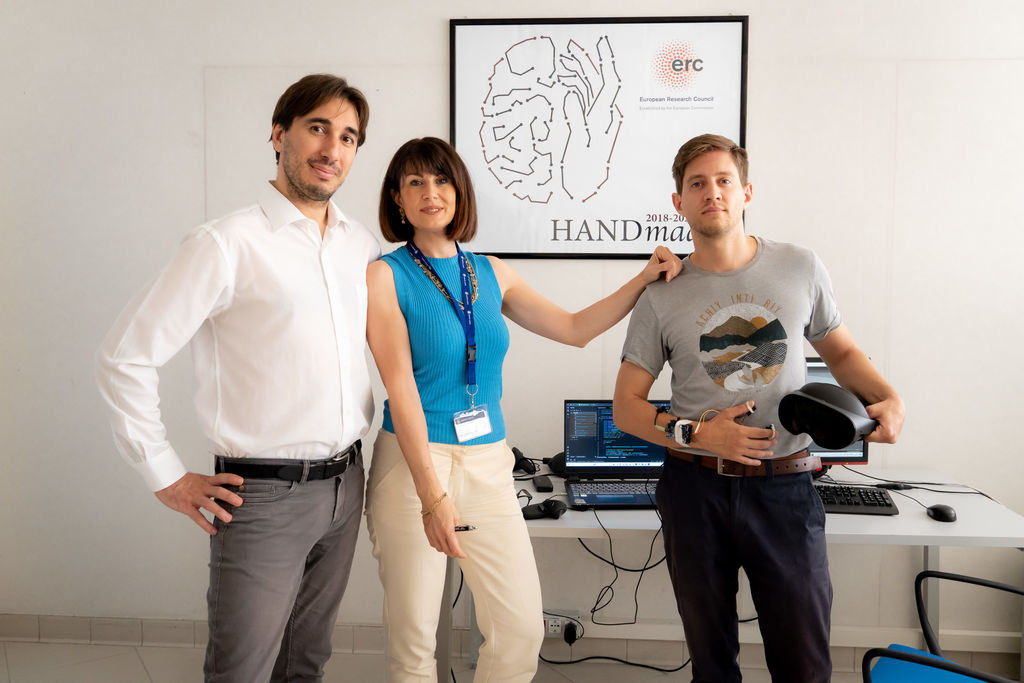
Prosthetics and bionic hands: if they do not resemble human hands, they work better
If a bionic hand does not look human, the user is able to use it better, even improving their ability to identify it as their own (a process known as incorporation or embodiment). This is the result of the study, published in the scientific journal iScience and conducted by the Applied Neuroscience and Technology Laboratory of the Fondazione Santa Lucia IRCCS in Rome, in collaboration with Sapienza University of Rome and the University of Rome Tor Vergata.
Researchers used virtual reality to assess dexterity in performing a motor task using two different effectors: a virtual hand reproducing the real-life appearance of a limb and a bionic prosthesis similar to a pair of tweezers. The study, conducted on able-bodied individuals, showed that participants were more accurate and better at the required task, which consisted of pinching out virtual bubbles of a specific colour.
The research team also continued the experiment by measuring the level of embedding: the person received tactile stimulation on a finger of the real hand and, at the same time, observed a visual stimulus appearing on a virtual finger that may or may not correspond to the real finger.
When the location of the tactile and visual stimuli coincided, participants were faster in identifying the finger on which they felt the vibration. Otherwise, there was an increase in response time due to the discrepancy in location between the two stimuli. "This occurs when the brain processes the effector it sees in virtual reality as its own. If the embodiment has occurred, the subject takes longer to respond because they are more exposed to the effects of the incongruence between the tactile and visual stimulus," says Ottavia Maddaluno, one of the researchers.
The results of the experiment showed that participants incorporated the bionic hand better (or to the same degree) than the anthropomorphic hand. To explain the greater incorporation of the bionic limb we could resort to the theory of the "uncanny valley". "According to this theory", Maddaluno continues, "when humanoid robots reach too high a degree of similarity with a real human being, the brain recognises the humanoid as strange and foreign, complicating the recognition process".
The tactile stimulus of the experiment, designed to allow a vivid and clearly identifiable experience, was developed in the Physiology group of the Department of Systems Medicine at the University of Rome Tor Vergata. "To administer a tactile stimulus that is precise and synchronous with visual stimuli", says Alessandro Moscatelli of the University of Rome Tor Vergata, "wearable haptics were specially developed: "voice coil" type actuators were placed inside the device to modulate the amplitude and frequency of the vibrotactile stimulus.
According to the conclusions of the research team, the brain finds it easier to use the bionic gripper than the virtual hand. As a matter of fact, in the case of the hand, the brain is confronted with an object that produces very complex stimulation, whereas the bionic gripper is functionally similar to a hand and can reproduce its movements (e.g. the closing and opening of the index finger and thumb) more simply. Greater simplicity translates into less brain processing and, therefore, greater dexterity and ease of use. This evidence may pave the way for new concepts in the development of robotic prostheses.
"In the field of neurorehabilitation, we are already applying the findings of this study to improve the prostheses available today for people who are missing a limb due to amputation", explains Viviana Betti of the Department of Psychology of Sapienza University of Rome and director of the research laboratory at Fondazione Santa Lucia IRCCS. "The evidence with patients that we are conducting confirms the findings on able-bodied people with virtual reality and will be the subject of future publications".
The study was funded by the European Research Council project HANDmade (G.A. no. 759651) awarded to Viviana Betti.
References:
Rewiring the evolution of the human hand: How the embodiment of a virtual bionic tool improves behavior
M. Marucci, O. Maddaluno, C. P. Ryan, C. Perciballi, S. Vasta, S. Ciotti, A. Moscatelli, V. Betti
iScience – doi.org/10.1016/j.isci.2024.
Further Information
Viviana Betti
Department of Psychology, Sapienza University of Rome







